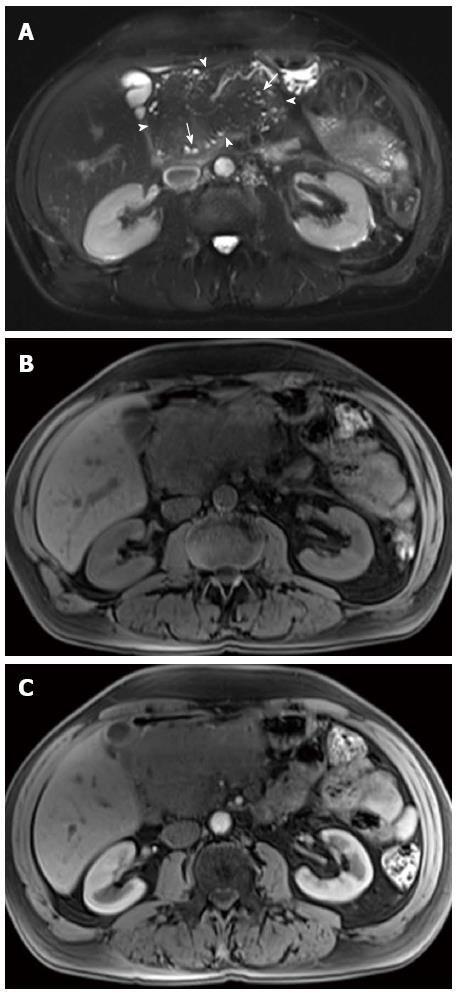Copyright
©2014 Baishideng Publishing Group Inc.
World J Gastroenterol. Oct 28, 2014; 20(40): 14760-14777
Published online Oct 28, 2014. doi: 10.3748/wjg.v20.i40.14760
Published online Oct 28, 2014. doi: 10.3748/wjg.v20.i40.14760
Figure 19 Chronic inflammatory mass simulating pancreatic adenocarcinoma.
A: Axial T2-weighted image with fat-suppression; B: Pre-contrast 3D-GRE T1-weighted image with fat-suppression during the hepatic arterial dominant phase; C: Post-contrast 3D-GRE T1-weighted image with fat-suppression during the hepatic arterial dominant phase. There is a complex lobulated pancreatic head mass (arrowheads) with multiple foci of increased T2 signal throughout (arrows) (A), associated with decreased pancreatic parenchymal T1 signal (B), proximal pancreatic ductal dilation (not shown), and diminished enhancement on post-Gadolinium images (C) in keeping the diagnosis of focal chronic pancreatitis.
- Citation: Manikkavasakar S, AlObaidy M, Busireddy KK, Ramalho M, Nilmini V, Alagiyawanna M, Semelka RC. Magnetic resonance imaging of pancreatitis: An update. World J Gastroenterol 2014; 20(40): 14760-14777
- URL: https://www.wjgnet.com/1007-9327/full/v20/i40/14760.htm
- DOI: https://dx.doi.org/10.3748/wjg.v20.i40.14760









